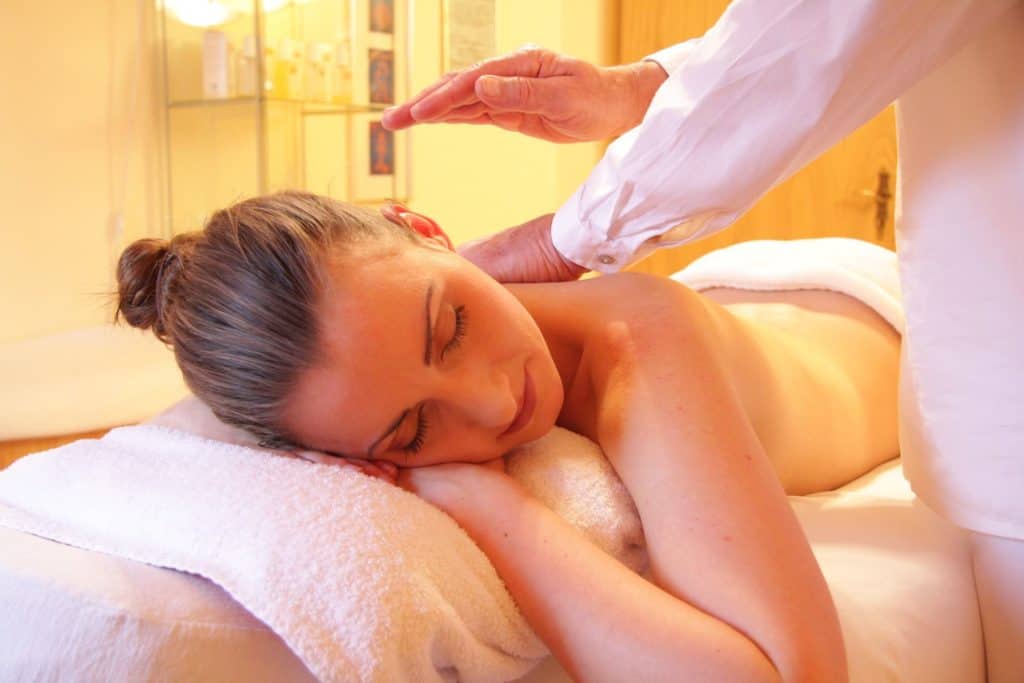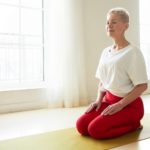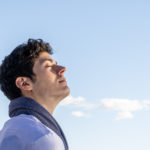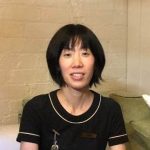
Miki Tameishi
ITEC Therapist (Aromatherapy, Holistic Massage, Reflexology), IEB Reflexologist, LCICI Japan Champissage trainer, Chakra-Aroma Reiki Master, Hbps Hydrotherapist
Massage therapy dates back to ancient times, and it was seen as a means of keeping the body in optimal health. Today we see massage as alternative therapy to help manage general health and wellbeing.
Research tells us that massage therapy has immense benefits for psychological wellbeing, and now studies reveal that massage can also assist with
- Improving sleep
- Increasing immune function
- Reducing hypertension
- Improving circulation and blood flow
- Reducing tension headache
As a trained massage therapist, it is my belief that massage is a holistic way to improve energy flow, balance our body, soul and mind, maintain our health and ultimately, keep us healthy. I hope that you will enjoy reading this article.
What is a massage?
Massage is an ancient treatment that applies mechanical stimuli directly to the surface of the human body.
It is a practice of manual pressure applied to specific points following the meridian or chart of the body. It uses techniques such as:
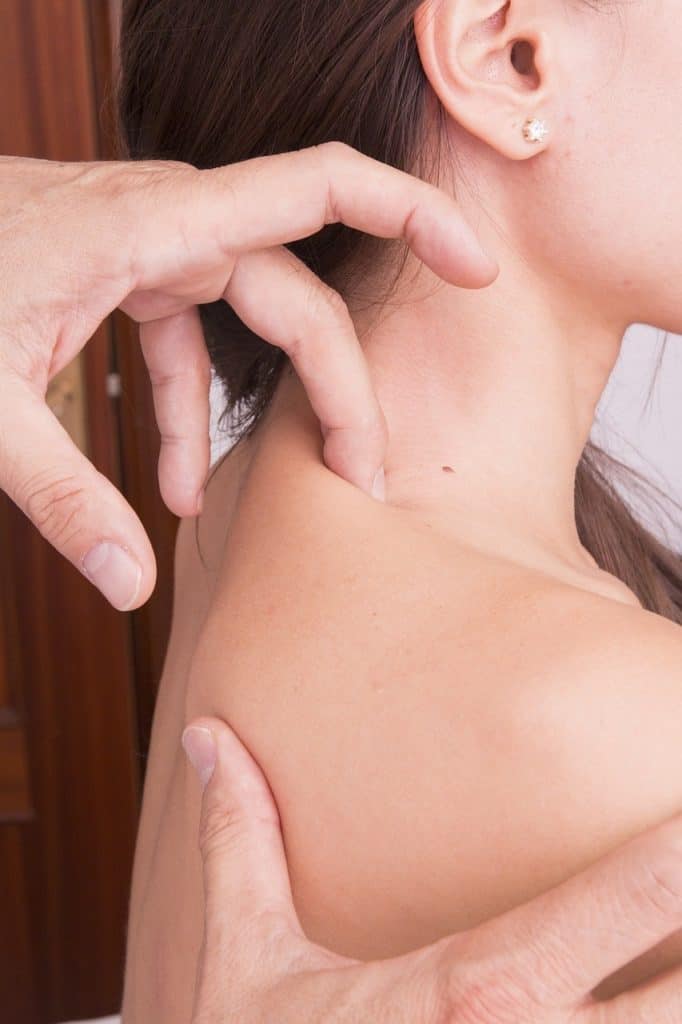
- Effleurage (long stroke)
- Petrissage (deep pressure)
- Wringing
- Rolling the skin
- Stretching
- Kneading
- Squeezing
- Compression
- Rubbing
- Drainage
- Friction
- Heating and percussion of the body
The mechanical stimuli mainly uses hands, elbows, knees, forearms, feet and/or a device.
Massage is an antidote to stress
The goal is to cause various biological reactions mechanically or reflexively with the intention to:
- Regulate the body’s modulation
- Relax and break the hard knots in muscles
- Warm up the body to improve blood flow and circulation to help excrete waste matter from the body.
History and origins of massage
Ancient times – Egypt
A massage was first recorded as a pictograph on the Egyptian tomb of Ankhmahor in 2330 BCE. The Egyptians invented their own bodywork techniques and were credited for developing reflexology, which involves applying pressure to specific points or zones on the feet and hands to affect healing.[1]
Ancient times – Greece and Rome
The Egyptians were thought to have influenced the Greeks and Romans, who used massage in different ways. In Greece, between 800 and 700 BCE, athletes used massage to condition their bodies before competitions, and doctors often applied herbs and oils in combination with massage to treat various medical conditions.
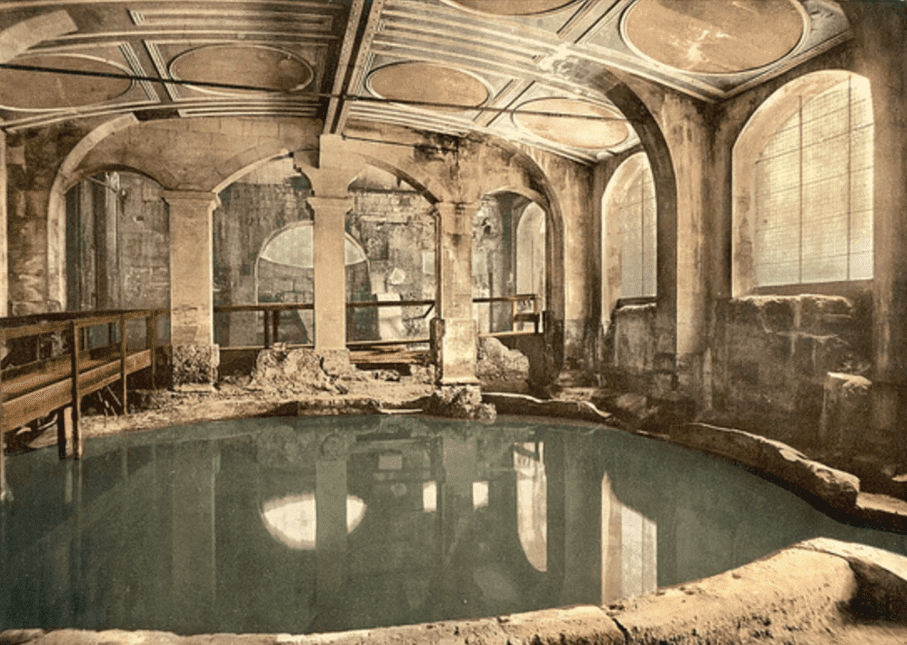
Source: Library of Congress, Prints and Photographs Division
Hippocrates, the “father of medicine,” treated physical injuries in the 5th century BCE with friction, a massage technique, and was the first to prescribe a combination of:
- Massage
- Proper diet
- Exercise
- Fresh air
- Music
to restore health imbalance – a remedy we hear of even today.[1]
First record of using massage as treatment for injuries dates back to Hippocrates
India
From as far back as 3000 BCE or earlier in India, massage was used by Hindus in Ayurveda “life health” medicine. It was a practice passed down through generations to heal injuries, relieve pain, and prevent and cure illnesses.
RELATED — Ayurvedic medicine and commonly treated health conditions
Promoters of Ayurveda believe that illness and diseases are caused when people are out of sync with the environment. Massage is believed to restore the body’s natural and physical balance so that it can heal naturally.
Traditionally, champissage – the massage of the head – is passed down from mothers to daughters.[2]
China and Southeast Asia
About 2700 BCE, Chinese massage methods developed as a combination of skills and practices of:
- Traditional Chinese Medicine
- Martial arts
- Spiritual yoga training of Buddhists and Taoists
Their methods were very similar to those of the Ayurveda, based on the belief that disease was caused by an imbalance or deficiency of energy of various pathways.
The ancient Chinese developed a text called The Yellow Emperor’s Classic Book of Internal Medicine, which is today considered a staple of massage therapy alternative medicine (acupuncture, acupressure and herbal remedies). Later, Chinese monks brought massage to Japan in 1000 BCE, which became the origin of Shiatsu practice.[1]

Western countries
The demand for masseurs and masseuses increased in the early 1900s. By the 1930s, Swedish massage had evolved, and the physiotherapists who used it in regular medicine helped massage therapy become a legitimate and respectable form of medicine.
Between 1970 and 2000, massage therapy experienced a transformation as people chose to live healthier lifestyles and preferred more holistic approaches to healthcare, pain management and restoration.
Types of massage
There are close to 100 different types of massage, and though some are quite similar in technique, others differ and have evolved over time. Below, we share the most common types of massage.
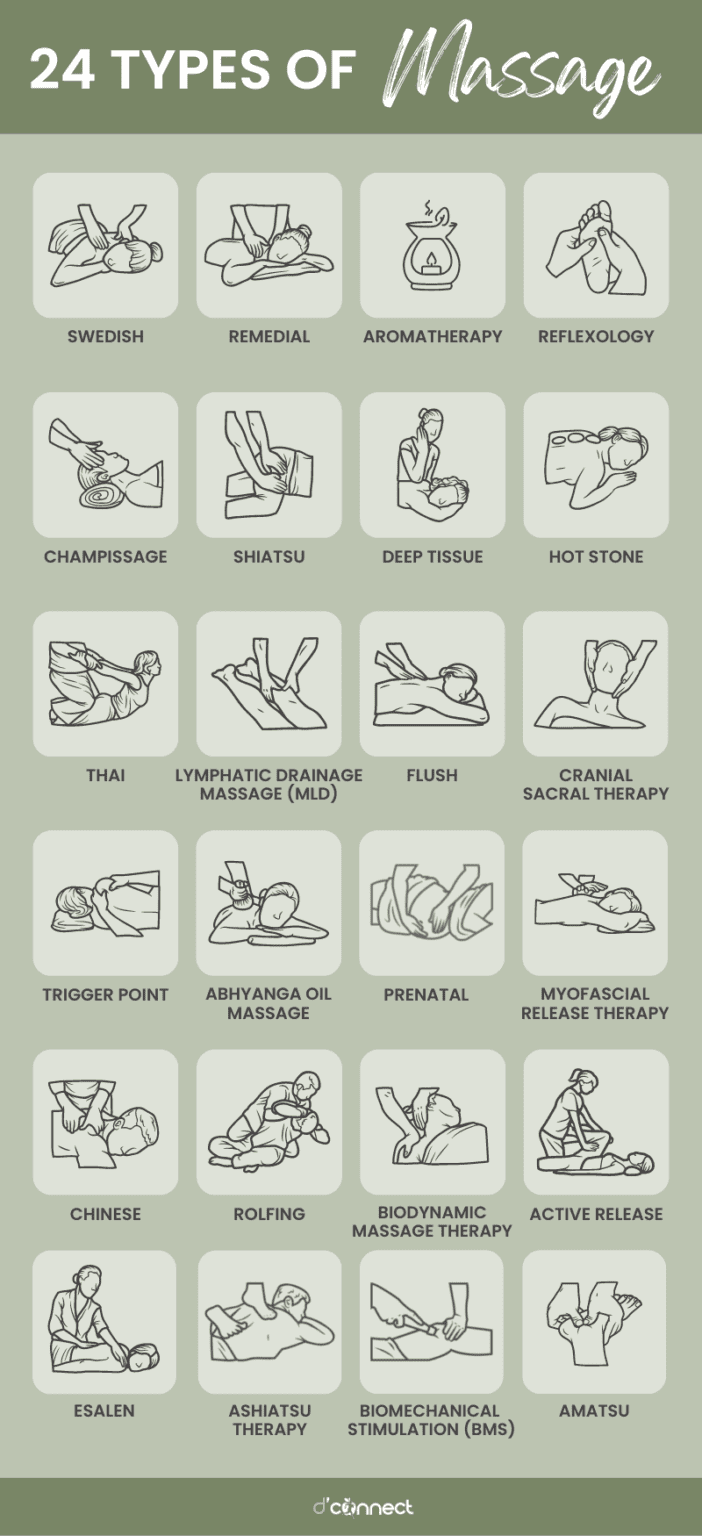
Swedish massage
The Swedish massage technique includes mechanically activating muscular tissue and also skin, tendons, fascias and connective tissue, which indirectly regulates the tonus of the autonomic nervous system.[3]
In the early 1800s, Pehr Henrik Ling created a method that helped relieve chronic pain. This became known as the Swedish Movement Cure.
Remedial massage
Remedial massage is used to locate and repair damaged areas of the body and speed up the body’s own healing processes.
The pressure applied in this healing treatment can either be strong and deep or gentle and shallow, depending on the issues.
Problems with the muscles can trigger or radiate pain to other parts of the body and remedial massage aims to trace the original reason for the pain, tackling both the cause of the problem and the symptoms.[4]
Aroma massage
Aroma massage is holistic and works mainly on the nervous system. Using pressure points along the spine, the massage works on the autonomic nervous system and has an immediate effect of relaxation. Indirectly, it also acts on mood.[5]
Essential oils are increasingly being used for the improvement of the quality of life and for the relief of various symptoms in patients.
RELATED — Aromatherapy: What is it and does it really work?
However, the scientific evaluation of the aroma-therapeutic effects of blended essential oils in people is still in progress, with limited data.[6]
Reflexology
Reflexology looks to restore balance and harmony in the body and release tension.
Practitioners of reflexology use thumb works (which is a massage using the thumbs) or tools like sticks to apply pressure to points and areas on the feet, hands, face and ears that correspond to specific organs, bones and body systems.
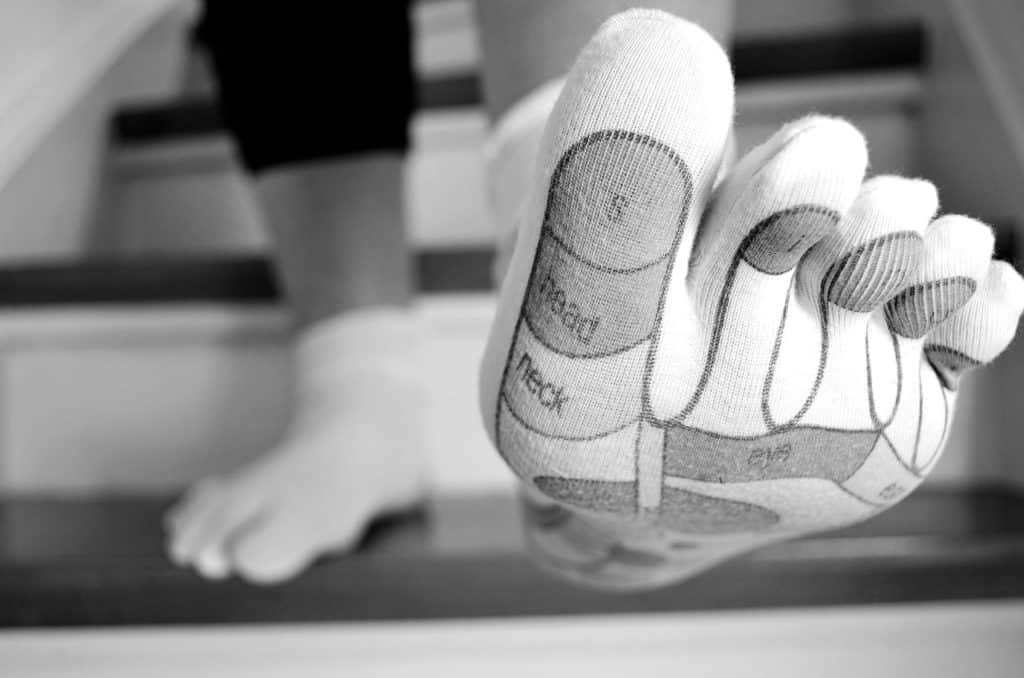
To represent how the body systems correspond to one another, reflexologists use reflexology “maps”.[7]
Champissage
Champissage or Indian head massage works on the upper back, shoulders, upper arms, head and face which are the areas most vulnerable to stress and tension.
It is a programme for the whole body, and it incorporates an Ayurvedic element into the massage which includes work on the three higher Chakras (energy vortices) – Visuddha, Ajna and Sahasrara – to rebalance the body’s entire energy system.[2]
Massage and health benefits
Research on massage and body manipulation has shown to have immense benefits for certain issues and conditions, such as:
- Pain reduction
- Improving circulation and blood flow
- Improving sleep
- Increasing immune function
- Increasing range of motion
- Reducing muscle tension and preventing injuries
- Reducing post-surgery injury/swelling
- Reducing hypertension
- Constipation relief
- Reducing tension headache
- Improving posture
RELATED — Bad posture can impact your health: Getting it straight
Massage as an antidote to stress (preventing diseases)
In Japan, we have our way of preventing serious illness to care or treat 不定愁訴 (futei suyso). Futei suyso refers to complaints of our overall wellbeing which are not related to a cause or unwellness and cannot be named, such as:
- Lack of energy
- Feeling tired and fatigued
- Experiencing constipation or diarrhoea
- Having poor sleep and circulation
- Feeling sore, dizzy or experiencing headaches
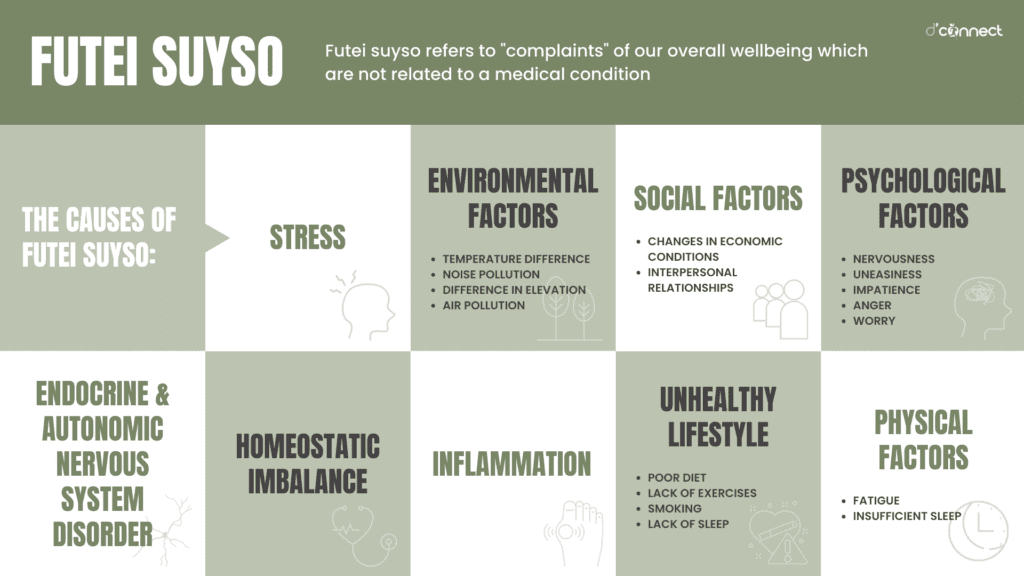
The causes of futei suyso are:
- Stress
- Environmental factors
- Social factors
- Psychological factors
- Physical factors
- Unhealthy lifestyle choices (like poor diet, exercises, smoking, lack of sleep and others)
- Inflammation
- Homeostatic imbalance
- Endocrine and autonomic nervous system disorder
Risks of massage therapy and when to avoid it
Here we go even into more detail, so you know when you should probably avoid having a massage. The following are contraindications as suggested by the International Therapy Examination Council (ITEC).
Health concerning contraindications
If you are suffering from the following issues, you should avoid massage completely:
- High fever
- Some skin condition
- Undiagnosed lumps
- Unexplained pain
- Loss of skin sensation
- Strong drugs or painkillers
If you have a certain condition, always check and ask if massage is appropriate for you
Contraindications to be mindful of
If a certain part of your body is showing signs of
- Swelling
- Inflammation
- Heavy bruising
- Recent scar tissue
- Fresh wounds
- Bone fractures
- Varicose veins
- Sunburn
then you should avoid massaging the area affected.
Request medical advice
If you have a certain disease or condition, as listed below, you should always check with your doctor if having a massage is safe for you.
Diseases or conditions that require doctor’s approval are:
- Diabetes
- Thrombosis
- Heart disease
- AIDS
- Cancer
- Psychiatric illness
- Pregnancy with complications (such as history of miscarriage, high blood pressure, bleeding, anomalous uterus and others)
- Recent inoculations.[8,9]
Self-massage
Self-massage is a form of home care treatment where we use our hands, tools or objects to release our tension and stiffness, and help with sore muscles.
Self-massage for back pain
Apply heat on the back with a heating pad or a wheat bag, or take a bath with epsom salt to warm up before massage.
Steps
- Lie on your back on the floor, with your knees bent.
- Place a tennis ball directly under the tense spot in your back. Hold for 20 to 30 seconds. If you have two balls on each side of your spine, you can stretch as well.
- To add more pressure, gently rotate your body to lean on the tennis ball. You can also cross one ankle over the opposite knee to increase the tension.
Optional: After the massage, use magnesium oil or cream with essential oils such as spike lavender, rosemary CT1, basil, sweet marjoram, bay laurel or nutmeg.
RELATED — Bay laurel (Laurus nobilis)
Self-massage for foot pain (except plantar fasciitis)
We can use a foot bath with epsom salts and add essential oils such as lavender, rosemary or sweet orange.
RELATED — Sweet Orange (Citrus Sinensis)
Steps
- Place a tennis or golf ball on the floor. Balancing on one foot or sitting, place the other foot over the ball.
- Roll the foot back and forth over the ball, adding more weight to the ball if it feels good. Continue for 3–5 minutes.
If you are dealing with plantar fasciitis, we suggest reading Common issues with calf muscles.

I also highly recommend the Japanese Aotake Fumi, which is a health method that uses half of a bamboo trunk to massage the soles of the feet while using our own weight.
Related Questions
1. How often should I get a massage?
Depending on the conditions and your preference, the general recommendation is at least once a month.
2. What is the most relaxing massage?
Aromatherapy massage is one of the most relaxing massages. You can expect the synergistic effects from the combination of a massage and the essential oils.
3. Would there be anything that we should avoid before a massage?
It is recommended that you do not have a big, heavy meal or alcohol before getting a massage.
4. What should I do after a massage?
You should drink plenty of water to flush out the toxins.
If you are planning to have a massage but are unsure which type might suit you best, let us know in the comments below, and we’ll write about that particular type of massage in our next article.
Miki is a Japanese-born traditionally trained massage therapist and aromatherapy practitioner. She has Japanese expertise, techniques and Western training. Miki has studied in both Asian and Western modalities.
Miki can be found at Herbal Aroma Spa and Wellness shop and LCICI Japan School – NZ. For more information on Miki, please visit HanaAkari.
References
(1) Florida Academy. (2019, May 17). The history of massage therapy: 5,000 years of relaxation and pain relief. Retrieved from https://florida-academy.edu/history-of-massage-therapy/#:~:text=The%20history%20of%20massage%20therapy%20dates%20back%20to%203000%20BCE,and%20prevent%20and%20cure%20illnesses
(2) Narendra, M. (1995). Training Course Manual for Indian Head Massage. The leading training centre in the UK.
(3) Moa, A. (2005, November). Effects of Swedish massage on blood pressure. Complementary Therapies in Clinical Practice, 11(4), 242-246. Retrieved from https://www.sciencedirect.com/science/article/abs/pii/S174438810500040X
(4) Healthdirect. (2021, April). Remedial massage. Retrieved from https://www.healthdirect.gov.au/remedial-massage
(5) Anne, J. (1992). Aromatherapy. Micheline Arcier.
(6) Hongratanaworakit T. (2011). Aroma-therapeutic effects of massage blended essential oils on humans. Natural product communications, 6(8), 1199–1204.
(7) Teagarden, K. (n.d.) What are reflexology points and areas? The University of Minnesota. Retrieved from https://www.takingcharge.csh.umn.edu/reflexology-points
(8) Hilton, S. (n.d.). Contraindications.
(9) Cara, Sherman, C. (2022, January 11). Contraindications and areas of caution for massage therapy. Retrieved from https://study.com/academy/lesson/contraindications-areas-of-caution-for-massage-therapy.html

